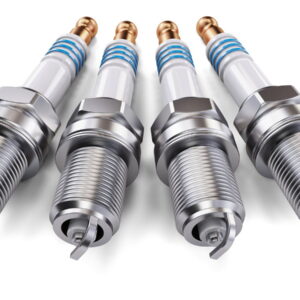Introduction
You’ve probably heard that your oil needs changing every 3,000 miles—as if it were chiseled in stone. But what happens when you switch to synthetic engine oil? Can you ignore oil changes for double or even triple that mileage? Mechanics might tell you one thing, yet the reality can be startlingly different. In this comprehensive guide, we’ll delve into how often you should change synthetic engine oil, explore the factors that influence these intervals, and reveal the shocking truth most mechanics won’t tell you. Along the way, we’ll provide credible references and data tables to help you make an informed decision that keeps your engine running smoothly and saves you money.
Why Synthetic Engine Oil Matters
Synthetic engine oils are engineered with advanced base stocks and additives, offering superior lubrication, thermal stability, and protection compared to conventional oils. Unlike conventional oil—which breaks down more quickly under high temperatures—synthetic oil maintains its viscosity and performance characteristics over extended periods. This means you can go farther between changes, but how far exactly?
- Improved Thermal Stability: Synthetic oils resist thermal breakdown and volatilization, reducing oil consumption and sludge formation.
- Enhanced Viscosity Control: They maintain stable viscosity across a wider temperature range, ensuring easier cold starts and optimal lubrication at high temperatures.
- Superior Engine Protection: With better resistance to oxidation and detergency, synthetic oils help keep engine components cleaner, minimizing wear.
Because of these advantages, manufacturers and oil companies often claim extended oil change intervals—sometimes up to 15,000 miles. But before you rev up your trip meter and hit the highway, you need to understand the nuances behind these recommendations.
How Often Should You Change Synthetic Engine Oil?
Manufacturer Recommendations
Most vehicle manufacturers provide an oil change interval in the owner’s manual, tailored to the engine’s design, tolerances, and warranty specifications. For many modern cars that come from the factory with synthetic oil, these intervals typically range from 7,500 to 10,000 miles, or 6 to 12 months—whichever comes first . Some luxury and high-performance models push this to 15,000 miles under ideal driving conditions .
However, these intervals assume “normal” driving conditions (steady highway driving, moderate climates, factory-recommended oil viscosity, and timely filter changes). Once you step outside these ideal conditions, the safe interval can shrink significantly.
Real-World Factors Affecting Intervals
In practice, several variables impact how long synthetic oil remains effective:
- Driving Habits and Conditions
- Stop-and-Go City Driving: Frequent idling, short trips, and low-speed traffic can accelerate oil contamination via moisture and fuel dilution, warranting changes every 5,000 to 7,500 miles.
- Highway Cruising: Steady speeds on highways generate less heat build-up and contamination. Many highway-centric drivers can approach the manufacturer’s upper interval (10,000–15,000 miles) .
- Severe Conditions: Towing, mountainous terrain, very high or low ambient temperatures, and dusty environments stress the engine and oil. Under these conditions, most experts recommend intervals closer to 5,000 miles or 6 months.
- Oil Quality and Type
- Full Synthetic vs. Synthetic Blend: Full synthetic oils, like Mobil 1™ or Castrol EDGE™, generally provide longer protection (10,000–15,000 miles) compared to synthetic blends (5,000–7,500 miles).
- Extended-Performance Oils: Some “extended-performance” oils boast change intervals up to 15,000 miles, but you must follow the oil manufacturer’s guidelines and use high-quality oil filters. .
- Vehicle Age and Mileage
- Older engines with higher mileage may have looser tolerances, leading to faster oil degradation and contamination. If your car is over 100,000 miles, consider more frequent changes (e.g., every 5,000–7,500 miles).
- Oil Change Indicators and Monitoring Systems
- Many modern vehicles feature oil life monitoring systems that calculate oil degradation based on factors like engine revolutions, temperature, and driving conditions. When the system alerts you (often around 7,500–10,000 miles), trust it—don’t blindly stick to a calendar interval.
Table: Comparing Oil Change Intervals
To visualize the differences between oil types and driving conditions, refer to the table below:
| Oil Type | Ideal Conditions (Highway Cruising) | Severe Conditions (City, Towing, Extreme Temps) | Time Interval |
|---|---|---|---|
| Conventional | 3,000–5,000 miles | 3,000 miles (or 3 months) | 3–6 months |
| Synthetic Blend | 5,000–7,500 miles | 5,000 miles (or 4–6 months) | 4–6 months |
| Full Synthetic (Standard) | 7,500–10,000 miles | 5,000–7,500 miles | 6–12 months |
| Full Synthetic (Extended) | 10,000–15,000 miles | 7,500–10,000 miles | 6–12 months |
- Ideal Conditions: Primarily highway driving, moderate climate, and normal loads.
- Severe Conditions: Frequent stop-and-go traffic, short trips (<10 miles each), towing heavy loads, dusty or extreme weather conditions.
Manufacturer Recommendations vs. Real-World Conditions
While the owner’s manual remains the definitive guide for oil change intervals, many drivers find the factory recommendations overly optimistic when actual driving conditions get tough. Here’s how to reconcile the two:
- Consult the Owner’s Manual First
Every car’s manual offers a baseline recommendation—often listing both “Normal” and “Severe” schedules. Follow these guidelines closely, as they account for factors like engine design, tolerances, and warranty requirements ). - Assess Your Driving Patterns
- If you average short trips around town, treat yourself as a “Severe” driver: change oil closer to 5,000 miles despite the manual saying 7,500 miles .
- Seasonal temperature swings (e.g., hot Lagos summers exceeding 100°F/38°C or rainy season humidity) accelerate oil breakdown. In such climates, err on the side of caution—change oil every 6 months, even if mileage is low
- Leverage Oil Life Monitoring
Modern cars often include oil life systems programmed for synthetic oils. Once the indicator drops to 15–20%, start planning your oil change. If driving in harsh conditions, the system will flag for a change sooner, reflecting real-time engine stress instead of a fixed mileage . - Consult Reputable Oil Brands
Many major oil manufacturers (e.g., Mobil 1, Castrol, Valvoline) publish their recommended change intervals. For instance, Mobil 1 claims their synthetic oils can go up to 15,000 miles in ideal conditions but advises 10,000 miles for typical drivers. Always reference the brand’s guidance when selecting oil.
The Shocking Truth Most Mechanics Won’t Tell You
1. “You Don’t Really Need to Change That Often”
Some mechanics—motivated by revenue—may downplay how quickly oil degrades under severe conditions, encouraging customers to stretch intervals beyond safe limits. Here’s the twist:
- Oil Contamination Happens Fast: Even synthetic oil accumulates contaminants (fuel, moisture, metal particulates) much faster during stop-and-go and short-trip driving. By 5,000–7,500 miles, the oil can be nearing the end of its protective life despite claims of 10,000+ mile intervals.
- Sludge and Carbon Buildup: Waiting too long allows sludge and deposits to form, compromising fuel efficiency and increasing engine wear. Mechanics might not inspect oil color or consistency—they’ll just rely on an oil change sticker. If you don’t ask to inspect the old oil, you may miss obvious degradation signs .
2. “Your Engine Might Be Already Damaged”
Delaying oil changes can cause irreversible engine wear:
- Bearing and Turbocharger Damage: When oil breaks down, its lubricating properties falter. Tiny metal-on-metal contact can occur in high-stress areas like crankshaft bearings and turbochargers. Over time, these components suffer accelerated wear, leading to expensive repairs or replacements .
- Overheating and Oil Oxidation: In hot climates (e.g., Lagos’s tropical heat), engine bays run hotter. Degraded oil oxidizes quicker, losing viscosity and forming varnish. This harms piston rings and cylinder walls, reducing engine compression and performance.
Mechanics often avoid showing you the sludge-caked oil pan or the coked oil filter—after all, it’s easier to change oil than to diagnose root causes. By the time you notice performance loss, damage might already be underway.
3. “Oil Life Monitors Aren’t a Magic Bullet”
While oil life monitoring systems are helpful, they’re not infallible:
- Sensor Limitations: Most systems rely on algorithms tracking engine revolutions and temperature. They lack direct measurement of oil contamination (fuel dilution, acid buildup). Thus, you might get a “change oil soon” message when there’s still viable oil—or vice versa .
- Bypassing Manual Checks: If you blindly trust the monitor, you may bypass a visual oil inspection that could have revealed dark, gritty oil needing immediate replacement. Mechanics seldom encourage customers to pop the dipstick—especially if they’re incentivized to sell additional oil change services.
4. “Some Oils Are Just Marketing Gimmicks”
Be wary of “extended-performance” and “lifetime” oils advertised to never require changes. The truth is:
- Toxic Additive Handling: Continuous use of “lifetime” oils can saturate them with combustion by-products and acids, rendering additives ineffective. Even if the oil looks clean, it may lack protective qualities.
- Engine Wear Accelerates: Engines accumulate micro particles that oil filters can’t catch 100%. Over time, additives deplete and viscosity shifts. No oil lasts forever—despite marketing claims.).
In short, the “oil change once and forget” approach is a marketing strategy masquerading as convenience. By understanding the limitations, you can avoid costly engine repairs down the road.
Factors Influencing Oil Change Intervals
Let’s explore in greater detail the factors that tweak your oil-change schedule:
1. Driving Conditions
- Severe/City Driving
- Frequent idling and short trips don’t allow the engine to reach optimal temperature, promoting moisture accumulation and fuel dilution in oil.
- Dust and stop-and-go traffic increase contaminant load.
- For city drivers, change synthetic oil around 5,000–7,500 miles or every 6 months.
- Highway Driving
- Prolonged driving at steady speeds allows engine to run hot enough to burn off moisture.
- Contaminants are less likely to accumulate rapidly.
- Many highway drivers can push synthetic oil to 10,000–15,000 miles .
- Extreme Climates
- In very hot or cold conditions, oil viscosity can shift if not chosen correctly.
- Lagos’s tropical humidity and heat accelerate oxidation, shortening oil life.
- Consider changing oil every 5,000 miles during peak heat seasons. .
- Towing and Heavy Loads
- Towing trailers or hauling heavy cargo stresses the engine.
- Oil temperature spikes, diminishing protective additives.
- Most experts suggest 5,000-mile intervals when towing.
2. Engine Type
- Turbocharged Engines
- Turbochargers run at extremely high temperatures (>300,000 rpm speeds), causing oil to break down faster.
- Turbos rely heavily on oil for both lubrication and cooling; degraded oil risks turbo failure.
- Change synthetic oil every 5,000–7,500 miles if your engine is turbocharged.
- High-Mileage Engines
- Older engines often have increased internal clearances, leading to more blow-by and oil contamination.
- If your odometer reads over 100,000 miles, switch to a high-mileage synthetic oil and change every 5,000–7,500 miles .
- Hybrid/Electric Vehicles
- Plug-in hybrids and electric vehicles with internal combustion engines still need periodic oil changes—though less often if the ICE isn’t used as frequently.
- For HEVs, follow manufacturer’s guidelines, typically 10,000 miles or 12 months (Lifewire).
3. Oil Quality and Viscosity
- Viscosity Grade (e.g., 0W-20, 5W-30, 5W-40)
- Using the manufacturer-recommended viscosity ensures optimal film strength and flow characteristics.
- Wrong viscosity can lead to increased friction or poor cold start protection, shortening oil life.
- Always check your owner’s manual for the correct grade ).
- Additive Packages
- Some oils contain more robust detergent, anti-wear, and antioxidant additives.
- Higher-end synthetic oils (e.g., Mobil 1 Extended Performance or Castrol MAGNATEC) often claim 15,000-mile intervals but recommend 10,000 miles for most drivers.
Signs You Need to Change Your Synthetic Engine Oil Sooner
Even with synthetic oil’s extended life, certain warning signs indicate it’s time for an early change:
- Dark, Gritty Oil on the Dipstick
- Healthy synthetic oil is amber and translucent. If oil appears dark brown or black with fine particles, it’s contaminated.
- Check by pulling out the dipstick, wiping, reinserting, and inspecting..
- Low Oil Pressure or Oil Warning Light
- Modern dashboards trigger warnings when oil quality or pressure drops.
- Never ignore an illuminated oil light—it often signals immediate oil degradation or low oil level..
- Sluggish Acceleration or Engine Noises
- As oil breaks down, friction between moving parts increases, causing rough idling or knocking sounds.
- If acceleration feels muted or you hear ticking/knocking, inspect oil. .
- Excessive Exhaust Smoke
- Blue smoke often indicates burning oil; fuel/oil mixture can degrade synthetic oil’s lubricating properties, causing leaks past seals.
- Address immediately to prevent catalytic converter damage.
- Fuel Economy Drops
- Dirty oil increases friction, making the engine work harder and consume more fuel.
- Noticeable MPG decline suggests oil viscosity has degraded. .
Common Myths About Oil Change Intervals
Myth 1: “Synthetic Oil Lasts Forever—No Need to Change for 20,000 Miles”
- Reality: No oil—synthetic or otherwise—resists contamination indefinitely. Even if the oil looks clean, additives deplete, and the oil’s protective qualities diminish. Sticking to a maximum of 15,000 miles (and often much less under severe conditions) is crucial .
Myth 2: “Only Mileage Matters, Not Time”
- Reality: Time degrades oil through moisture accumulation, acid formation, and additive breakdown—even if mileage is low. If you drive under 5,000 miles annually, still change synthetic oil every 12 months to avoid corrosion and sludge formation.
Myth 3: “All Synthetic Oils Are the Same”
- Reality: Quality varies dramatically between brands and formulations. Premium oils (Mobil 1, Castrol EDGE, Royal Purple) have superior additive packages and purity levels compared to budget synthetics. Always compare specifications and service classifications (API SP, ILSAC GF-6) .
Myth 4: “DIY Oil Changes Are Always Cheaper”
- Reality: While doing it yourself can save on labor costs, if you skip premium filters, use incorrect viscosity, or fail to dispose of oil properly, you may harm your engine or incur environmental fines. Paying a trusted shop that uses high-quality oil and filters can be more cost-effective in the long run.
How to Choose the Right Oil and Interval for Your Car
- Reference Your Owner’s Manual First
- Locate the “Scheduled Maintenance” section and identify the recommended oil viscosity and change interval (both “Normal” and “Severe” schedules).
- If your manual says 5,000 miles under severe conditions, don’t ignore it.
- Select a Reputable Full Synthetic Brand
- Look for oils meeting current API SP and ILSAC GF-6 standards.
- Popular options include:
- Mobil 1 Extended Performance (up to 15,000 miles)
- Castrol EDGE (up to 10,000 miles)
- Valvoline SynPower (up to 10,000 miles).
- Use the Correct Viscosity Grade
- Confirm 0W-20, 5W-30, or 5W-40 based on your climate and engine design.
- In Lagos’s tropical heat, 5W-30 or 5W-40 is often optimal for summer; switch to 0W-20 or 5W-20 in cooler months. .
- Stick to a Conservative Interval Under Severe Conditions
- If you frequently encounter heavy traffic, short trips, or towing, plan oil changes every 5,000–7,500 miles.
- Otherwise, use the upper limit of 10,000 miles for typical highway driving.
- Always replace the oil filter with every oil change..
- Perform Regular Oil Inspections
- Every 1,000 miles, quickly check oil level and color.
- If oil appears dark or gritty, schedule an oil change—even if you haven’t hit the mileage target.
FAQs
How Often Should I Change Synthetic Oil in a High-Mileage Car?
For vehicles over 100,000 miles, synthetic oil can still provide benefits, but you should change it every 5,000–7,500 miles due to increased internal clearance and contamination.
Can I Mix Synthetic and Conventional Oil?
While occasional mixing in an emergency won’t kill your engine, it negates the benefits of synthetic oil’s additives and performance advantages. Always use the same oil type for consistency and protection.
Is It Safe to Go 15,000 Miles on Synthetic Oil?
Only under ideal conditions—mostly highway driving, temperate climate, and using a premium extended-performance oil. Most drivers won’t meet these criteria; aim for 10,000 miles as a safer maximum.
Does Severe Driving Reset the Interval?
Yes. If you tow, drive in stop-and-go traffic, or face extreme temperatures, treat yourself as a “Severe” driver and reduce intervals by at least 25% from the “Normal” schedule .
Conclusion
Changing synthetic engine oil is not just a routine chore—it’s a critical step in preserving engine health and performance. While many mechanics might assure you that long intervals (up to 15,000 miles) are safe, the shocking truth is that oil deteriorates faster under real-world conditions. By understanding the difference between manufacturer guidelines and actual driving factors, you’ll avoid premature engine wear, costly repairs, and reduced fuel economy.
Key Takeaways
- Synthetic oils typically last longer (7,500–15,000 miles), but assume 5,000–7,500 miles for severe driving. (Vehiclescene, Cars Bibles)
- Always use the oil viscosity and brand recommended by your owner’s manual. (wilsonautomotive.com, autonationmobileservice.com)
- Monitor oil health via dipstick checks and heed oil life indicator warnings—don’t rely solely on mileage. (Newsweek, Vehiclescene)
- Inspect oil for dark, gritty appearance; change sooner if contamination is evident. (automotoride.com, autonationmobileservice.com)
By following these guidelines—verifying your car’s specific recommendations, selecting a quality full synthetic oil, and adjusting intervals based on your driving scenario—you’ll ensure optimal lubrication, engine longevity, and peace of mind. Don’t let myths or uninformed mechanics dictate your maintenance schedule; empower yourself with knowledge and extend your engine’s life one oil change at a time.






